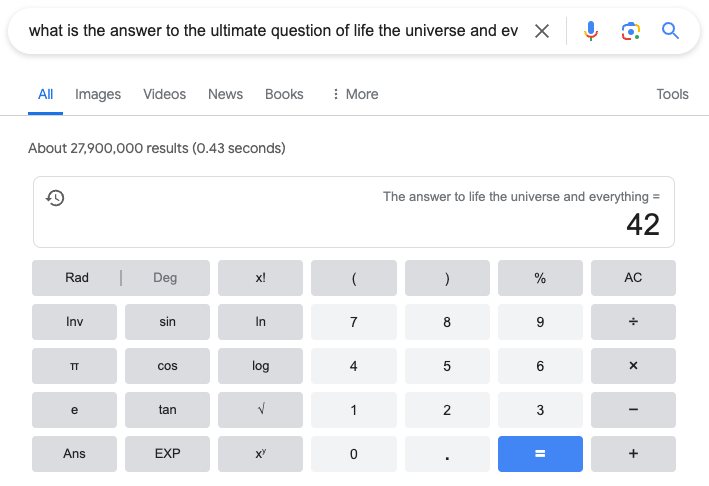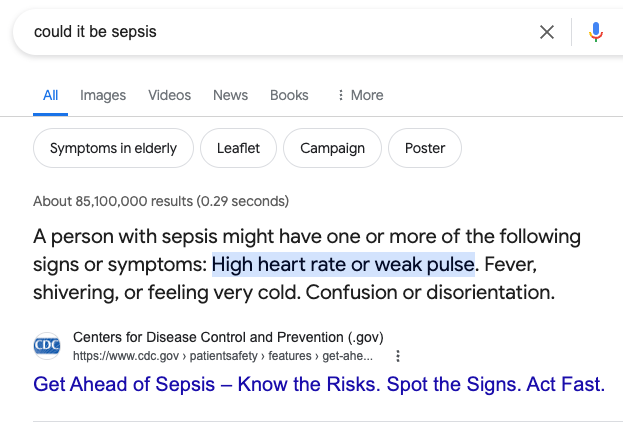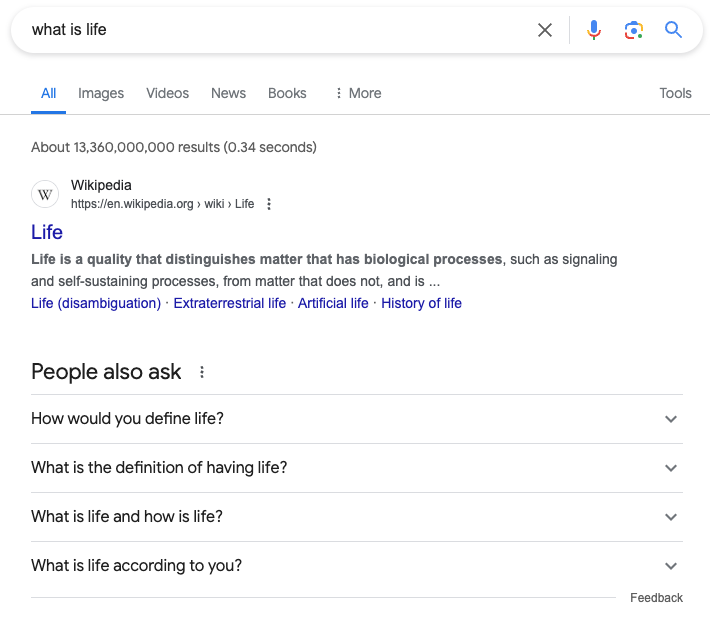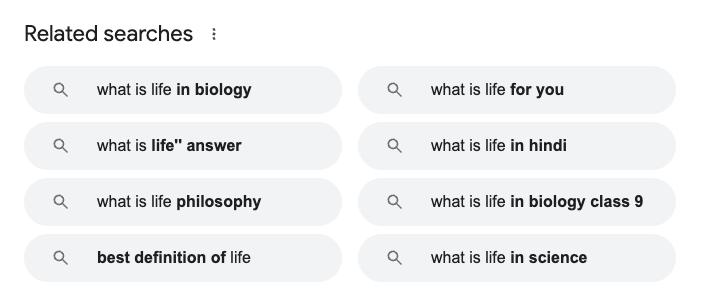
A Content Writer’s Guide to Search Intent Optimization
Search intent optimization might sound like yet another thing that you, as a writer, need to do to satisfy Google’s algorithms. However, it’s actually about creating content that satisfies your audience – and ensuring that they can find it.
Let’s have a closer look at what search intent is, how it’s used by search engines like Google, and how you can use it in your content writing.
What Is Search Intent?
Search intent (or user intent) is the purpose a person has in mind when they type a query into an internet search engine. For example, if you’re watching Mad Men and really like Peggy’s dark blue dress, your purpose – or intent – in searching online might be to find out if she wears it again (she does), how you could make one, or where you could buy something similar.
Essentially, your search intent is to find a solution to a problem.
Why Is Search Intent Important?
When searching online to solve a problem, the purpose of the search engine is to ensure that the results it provides are likely to solve it. Relevance is an important factor in ranking search results; therefore, interpreting the intent behind common words or phrases is important in search engine optimization.
As a writer, it’s important that you address issues that your audience is likely to have – otherwise, they won’t go looking for your content, search engines won’t find it, and people won’t read it.
Types of Search Intent
Search intent is commonly divided into four categories: commercial, transactional, informational, and navigational. We’ll take each of those in turn, look at how you can identify them, and give you some examples of queries or keywords to look out for and use.
Informational
Someone with informational search intent (or, as Google calls it in the guidelines issued to their search quality raters, a Know query), wants to know more about a subject.
This sort of search tends to start with who, what, where, how, why, do,oris paired with the subject of the query.
But it needn’t be a question. A search for types of espresso-based drinks is also a request for information, as is espresso-based drinks.
Some searches with informational intent have a straight answer, which Google will display first:

Others may produce a featured snippet at the top of the results page – the prized position for your content:

Commercial
Someone searching with commercial search intent is looking to buy something or use a service but would like further information about it first.
Some of the keywords that are likely to be combined with a product or service in a search with commercial intent are:
- Best: e.g., Best supermarket pies
- Which: e.g., Which Mini
- Review: e.g., Oppenheimer review
- Near me: e.g., Coffee shops near me
Of course, not everyone has time to type a full question. Some shorter keywords and phrases, such as coffee shops, are just as clear in their commercial intent.
Transactional
In contrast to commercial search intent, someone searching with transactional intent has done their research and is ready to do something with that information. It doesn’t necessarily involve buying something: it could, for example, include signing up to a mailing list.
Some of the likely keywords for this sort of search query would be:
- Buy: e.g., Buy Barbie tickets
- Book: e.g., Book cottage in Mumbles
- Price: e.g., Mini Cooper price
But a search with transactional intent needn’t always include specific transactional words. For example, a search for Barbie tickets is just as clear (and quicker to type).
Navigational
A navigational search is what you do if you’re looking to find a particular website or page.
A navigational search could involve typing in the exact URL of the site or page:
knowadays.com or https://knowadays.com/
It could also be more vague:
Knowadays blog
But it will almost always include the brand or company name that you’re looking for.
How to Optimize Content for Search Intent
Now that you know the categories of content and what people might be typing into the search engine for each one, let’s have a look at how you can make good use of that information in your content writing.
Here are our top tips:
1. Discover the Intent
To be successful, your content has to meet your audience’s needs. But what are those needs?
The intent behind a search is usually easy to spot, but if you’re not sure, then a simple – and free – way to find out is to do your own.
Keep it simple to start with. If, for example, you type espresso-based drinks into the search bar, the top organic search results are all about how to make them, rather than where to buy them. That’s a clear informational intent.
2. Match Content to Intent
Having discovered the type of search intent, you need to make sure your content matches it.
- Information intent will require educational content. The search you did in our first tip will give you an idea of whether you should address the how, what, why, when, or where of a subject.
- Commercial intent will most likely require you to address the which of a subject.
- Transactional intent will require a product listing, using your best copywriting skills.
- Navigational intent will require a website or page with clear branding.
3. Match Format to Intent
Content comes in different forms. A little investigation into the intent behind a search can help you to create relevant and helpful content.
For example, once you’ve discovered that the search intent is for information, have a look at how the top results have presented that information. Are they long-form or short-form? A listicle or a Q&A?
Knowing how your audience would like the answer presented will help you create content they’ll want to read.
4. Check Out Google’s Autocomplete Suggestions
If you’ve ever watched YouTube videos of celebrities answering the web’s most searched questions – like this one with characters from Sesame Street – then you’ll have seen Google’s autocomplete suggestions in action. As well as providing entertainment, this feature can also be used when targeting your content.
Your content will need to answer your audience’s questions. Try typing one of the suggested initial keywords (e.g., how or which, depending on the search intent you’ve discovered) plus your subject into the search box and have a look at the suggested searches. Use those as a guide for the sort of issues your content could address.
5. See What “People Also Ask”
In addition to suggesting searches as you type, Google’s results page includes a People Also Ask section:

This, as well as the Related Searches section toward the bottom of the page, should give you some ideas about other helpful issues you could address in your content writing:

6. Choose Keywords with Clear Intent
You can use your understanding of search intent to select and use keywords that will help your audience find your content.
To stand the best chance of a high ranking for your content, choose a keyword (which could be – and often is – a phrase, rather than a single word) that is clear in its intent. This will make it easier for the search engine to determine the relevance of your content to the search. The more relevant your content is to the search, the higher it will rank in the results. For example:
- Barbie could indicate a blog post about the history of the doll, a review of the film, or the sale of pink accessories
- Barbie review could be a review of the doll or the film
- Barbie film review is clear in its intent and would be more likely to include your review in search results
7. Write Relevant Titles
Having gone to the trouble of making sure your content matches the search intent in terms of type and format, you need to make that obvious from its title.
An eye-catching title that clearly addresses the search intent will be more likely to rank highly in search results. And, once there, it’s more likely to get a click from your audience.
8. Craft Engaging Meta Descriptions
A meta description is the little snippet of information that follows the title in search results:

This is your chance to say, in effect, “I understand what you’re searching for, and here it is.”
Becoming a Freelance Writer
To be a content writer – a successful one – you need to write something that your audience wants to read. As we’ve seen, an understanding of search intent can help you write relevant content. And relevant content will satisfy both your audience and the search engine.
To learn more about what it takes to be a successful content writer – or to brush up your existing skills – why not take our Becoming A Freelance Writer course? You can even try it out for free.





Your email address will not be published.